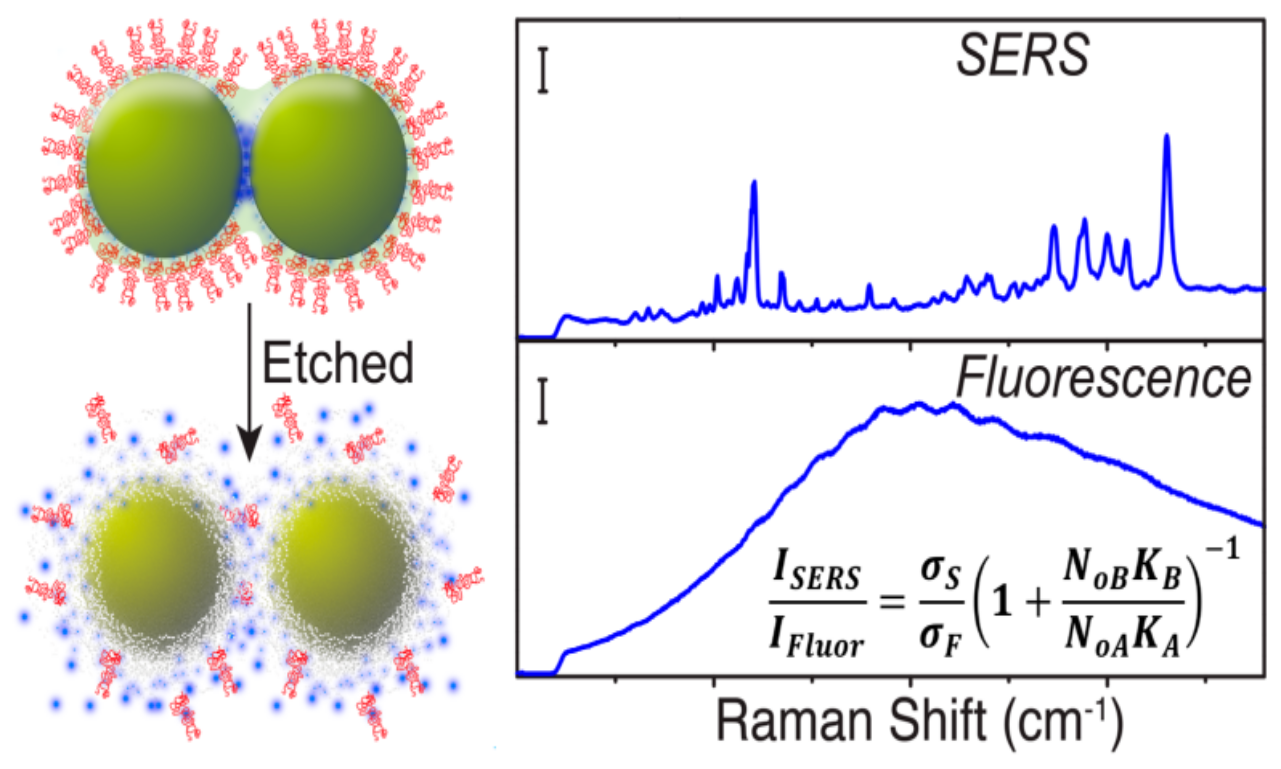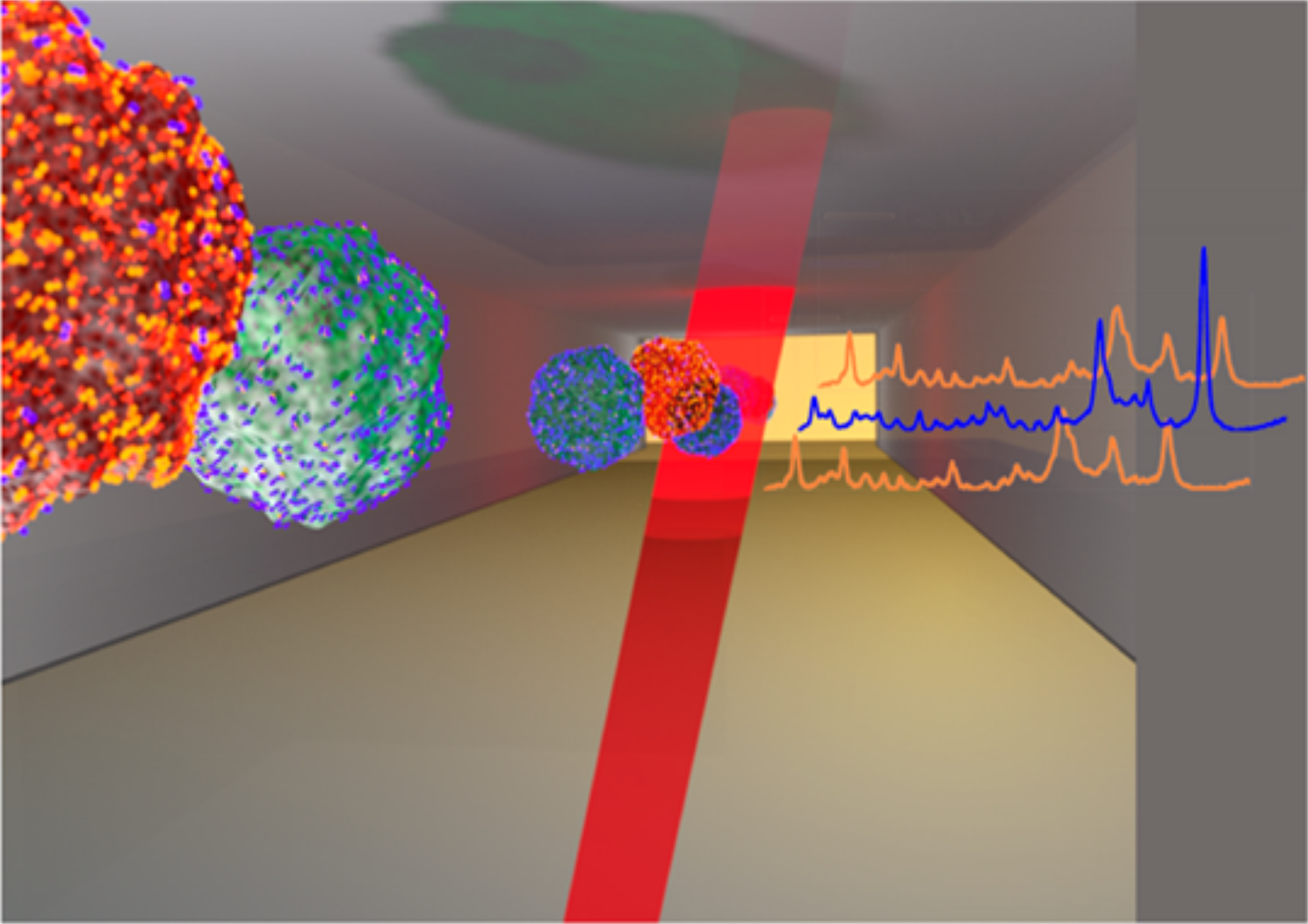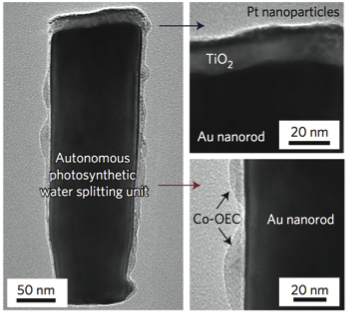Large Format Surface-Enhanced Raman Spectroscopy Substrate Optimized for Enhancement and Uniformity
ACS Nano (2016)
Katherine N. Kanipe, Philip P. F. Chidester, Galen D. Stucky, and Martin Moskovits

Gratings have been widely investigated both theoretically and experimentally as surface-enhanced Raman spectroscopy (SERS) substrates, exhibiting, under appropriate circumstances, increased far-field extinctions and near-field intensities over those of an appropriately equivalent number of isolated particles. When the grating order transitions from evanescent to radiative, narrow resonance peaks are observed in the extinction spectrum whose properties can be manipulated by controlling the grating’s geometric parameters. Here we report the application of the architectural principles of grating fabrication using a square two-dimensional array of gold-coated nanostructures that achieves SERS enhancements of 107 uniformly over areas of square centimeters. The high-performance grating substrates were fabricated using commonly available foundry-based techniques that have been chosen for their applicability to large-scale wafer processing. Additionally, we restricted ourselves to a parametric regime that optimizes SERS performance in a repeatable and reproducible manner.
Anisotropic Growth of TiO2 onto Gold Nanorods for Plasmon-Enhanced Hydrogen Production from Water Reduction
J. Am. Chem. Soc. (2016)
Binghui Wu, Deyu Liu, Syed Mubeen, Tracy T Chuong, Martin Moskovits, and Galen D. Stucky

Plasmonic metal/semiconductor heterostructures show promise for visible-light-driven photocatalysis. Gold nanorods (AuNRs) semi-coated with TiO2 are expected to be ideally structured systems for hydrogen evolution. Synthesizing such structures by wet-chemistry methods, however, has proved challenging. Here we report the bottom-up synthesis of AuNR/TiO2 nanodumbbells (NDs) with spatially separated Au/TiO2 regions, whose structures are governed by the NRs’ diameter, and the higher curvature and lower density of CnTAB surfactant at the NRs’ tips than on their lateral surfaces, as well as the morphology’s dependence on concentration, and alkyl chain length of CnTAB. The NDs show plasmon-enhanced H2 evolution under visible and near-infrared light.
Biotags Based on Surface-Enhanced Raman Can Be as Bright as Fluorescence Tags
Nano Letters (2015)
Alessia Pallaoro, Gary B. Braun, Martin Moskovits
 Surface enhanced Raman spectroscopy (SERS) is a powerful analytical technique that has been proposed as a substitute for fluorescence for biological imaging and detection but is not yet commercially utilized. The reason lies primarily in the lower intensity and poor reproducibility of most metal nanoparticle-based tags as compared to their fluorescence-based counterparts. Here, using a technique that scrupulously preserves the same number of dye molecules in both the SERS and fluorescence measurements, we show that SERS-based biotags (SBTs) with highly reproducible optical properties can be nanoengineered such that their brightness is at least equal to that of fluorescence-based tags.
Surface enhanced Raman spectroscopy (SERS) is a powerful analytical technique that has been proposed as a substitute for fluorescence for biological imaging and detection but is not yet commercially utilized. The reason lies primarily in the lower intensity and poor reproducibility of most metal nanoparticle-based tags as compared to their fluorescence-based counterparts. Here, using a technique that scrupulously preserves the same number of dye molecules in both the SERS and fluorescence measurements, we show that SERS-based biotags (SBTs) with highly reproducible optical properties can be nanoengineered such that their brightness is at least equal to that of fluorescence-based tags.
Rapid Identification by Surface-Enhanced Raman Spectroscopy of Cancer Cells at Low Concentrations Flowing in a Microfluidic Channel
ACS Nano (2015)
Alessia Pallaoro, Mehran R. Hoonejani, Gary B. Braun, Carl Meinhart, Martin Moskovits

An autonomous photosynthetic device in which all charge carriers derive from surface plasmons
Nature Nanotechnology (2013), 8, 247-251
Syed Mubeen, Joun Lee, Nirala Singh, Stephan Kraemer, Galen D. Stucky, Martin Moskovits

Solar conversion to electricity or to fuels based on electron-hole pair production in semiconductors is a highly evolved scientific and commercial enterprise. Recently, it has been posited that charge carriers either directly transferred from the plasmonic structure to a neighbouring semiconductor (such as TiO2) or to a photocatalyst, or induced by energy transfer in a neighbouring medium, could augment photoconversion processes, potentially leading to an entire new paradigm in harvesting photons for practical use. The strong dependence of the wavelength at which the local surface plasmon can be excited on the nanostructure makes it possible, in principle, to design plasmonic devices that can harvest photons over the entire solar spectrum and beyond. So far, however, most such systems show rather small photocatalytic activity in the visible as compared with the ultraviolet. Here, we report an efficient, autonomous solar water-splitting device based on a gold nanorod array in which essentially all charge carriers involved in the oxidation and reduction steps arise from the hot electrons resulting from the excitation of surface plasmons in the nanostructured gold. Each nanorod functions without external wiring, producing 5 x 1012 H2 molecules per cm2 per s under 1 sun illumination (AM 1.5 and 100 mW cm-2), with unprecedented long-term operational stability.
